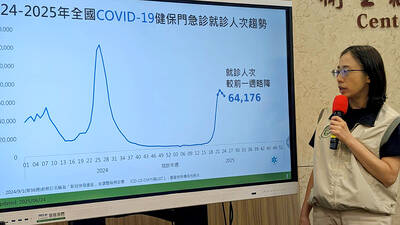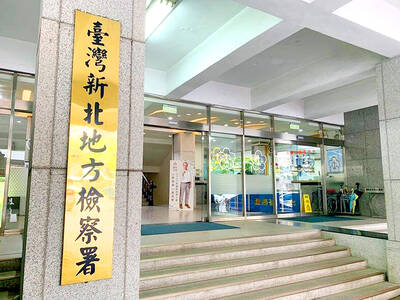The Port of Kaohsiung is technically suitable to become a US Navy port of call, as it has handled mega cargo container ships with greater hull length and draft than US carriers, a high-ranking harbor official said.
On June 28, the US Senate on Armed Services Committee authorized US Navy vessels to anchor at Taiwanese ports, resulting in discussions by Kaohsiung’s port authorities about how they would prepare to receive US warships.
“The Port of Kaohsiung has not been contacted by the Ministry of National Defense or the American Institute in Taiwan regarding this highly sensitive issue,” a senior harbor official said on condition of anonymity.
However, the port is theoretically capable of handling Nimitz-class supercarriers and other warships, as bigger ships have made stops at the harbor’s Pier 2 before, the official said.
Mega container ships that have anchored in the port include the Maersk Mc-Kinney Moller, the Yang Ming World and Compagnie Generale Maritime’s Benjamin Franklin, the official added.
The Triple E-class Maersk Mc-Kinney Moller, one of the largest ships in the world, is 400m long and has 16m of draft.
In comparison, a Nimitz-class nuclear-powered carrier is 335m long and has less than 15m of draft, the official said.
“The crucial factors are maneuvering and piloting,” the official said, adding that the harbor should be capable of handling US carriers after arrangements are made for towing and guiding them.
The US Navy’s Seventh Fleet between the 1950s and 1970s used Keelung as a port of call, which was visited by US carriers Wasp and Enterprise, as well as the nuclear-powered attack submarine Swordfish.
Former president Chiang Kai-shek (蔣介石) visited all three of the vessels, the official said.

China might accelerate its strategic actions toward Taiwan, the South China Sea and across the first island chain, after the US officially entered a military conflict with Iran, as Beijing would perceive Washington as incapable of fighting a two-front war, a military expert said yesterday. The US’ ongoing conflict with Iran is not merely an act of retaliation or a “delaying tactic,” but a strategic military campaign aimed at dismantling Tehran’s nuclear capabilities and reshaping the regional order in the Middle East, said National Defense University distinguished adjunct lecturer Holmes Liao (廖宏祥), former McDonnell Douglas Aerospace representative in Taiwan. If

ECHOVIRUS 11: The rate of enterovirus infections in northern Taiwan increased last week, with a four-year-old girl developing acute flaccid paralysis, the CDC said Two imported cases of chikungunya fever were reported last week, raising the total this year to 13 cases — the most for the same period in 18 years, the Centers for Disease Control (CDC) said yesterday. The two cases were a Taiwanese and a foreign national who both arrived from Indonesia, CDC Epidemic Intelligence Center Deputy Director Lee Chia-lin (李佳琳) said. The 13 cases reported this year are the most for the same period since chikungunya was added to the list of notifiable communicable diseases in October 2007, she said, adding that all the cases this year were imported, including 11 from

Prosecutors in New Taipei City yesterday indicted 31 individuals affiliated with the Chinese Nationalist Party (KMT) for allegedly forging thousands of signatures in recall campaigns targeting three Democratic Progressive Party (DPP) lawmakers. The indictments stem from investigations launched earlier this year after DPP lawmakers Su Chiao-hui (蘇巧慧) and Lee Kuen-cheng (李坤城) filed criminal complaints accusing campaign organizers of submitting false signatures in recall petitions against them. According to the New Taipei District Prosecutors Office, a total of 2,566 forged recall proposal forms in the initial proposer petition were found during the probe. Among those

A 23-year-old Taichung man vowed to drink more water after his heavy consumption of sugary tea landed him in hospital with a kidney infection and sepsis. The man, surnamed Lin (林), used to drink two cups of half-sugar oolong tea while working at a food stall, where he often had to wait a long time before urinating. Lin developed kidney stones and noticed blood in his urine, but ignored the issue after taking medication for three days. A month later, he went to the emergency room after experiencing a recurring fever and was diagnosed with a kidney infection that led to sepsis, landing